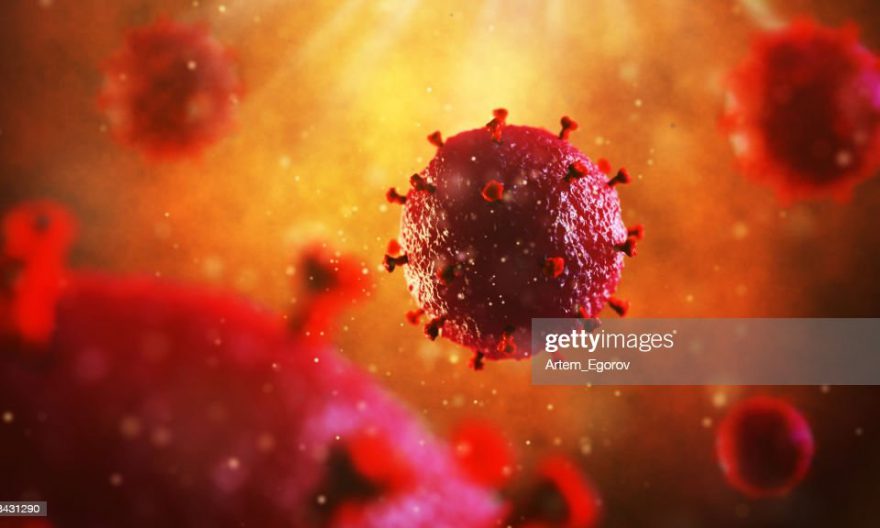
Over the past decades, the world, despite facing unprecedented public health threats, has been making progress in fighting HIV and other sexually transmitted diseases. In spite of a gloomy past and trying future, new research findings and treatments have been flickering rays of hope for the world that has still been grappling with global pandemics like COVID19. Over the years, tangible results have been gained in maximizing immunity and mitigating stigmatization. The hard work of scientists and researchers has paid off making treatments effective.
As a result of some headway, these days, people with HIV who know their status and take HIV medication as prescribed can live long healthy lives and have effectively no risk of transmitting HIV to others.
However, HIV and other communicable diseases continue to impact millions of people across the globe requiring increased commitment from scientists and researchers to find a better way in fighting the disease and helping those living with public health viruses once considered and continue to be the deadliest public health threat.
To effectively fight the disease though, the world must have sound scientific data and should look for a new strategy for treating HIV and other diseases to minimize the impacts.
Sometimes, people infected with one disease are more likely to be exposed to more diseases and face enormous health complications losing hope of longer age and survival.
For instance, research indicated that people living with HIV are 100 to 2,300 times more likely to develop visceral leishmaniasis, also known as Kala-Azar.
HIV AIDS and visceral leishmaniasis are among the communicable diseases in the world that attack the human body by weakening the immune system. The two diseases are transmittable the combination creates serious health complications.
Unlike HIV, visceral leishmaniasis basically transmits from person to person by a bite of a sand fly – causing fever, weight loss, and intense fatigue. It is often fatal if left untreated on time.
Both diseases are transmittable. Specifically, in the tropical atmosphere, the occurrence of the one increases the probability to be infected by the other.
In Ethiopia, young seasonal migrant workers, who work on large farms and are exposed to sand-flies bites, are some of the people most at risk of co-infection. Apart from the low efficacy of the standard treatments for this patient population, they also often relapse, stay in hospitals for long periods, lose their income, and fall deeper into poverty. They may also be ostracized by their co-workers and communities and sometimes even by their own family members.
In some districts of the Indian state of Bihar – India’s most endemic state – up to 20 percent of adults diagnosed with visceral leishmaniasis are co-infected with HIV. These co-infected patients serve as a reservoir for visceral leishmaniasis, which is hampering sustainable elimination efforts in the country.
These diseases pose a severe health threat when they co-infect a person at a time. In addition to their direct injury to health, both expose the patient to further diseases since they mainly attack the immune system thereby making it hard for the patient to be cured.
Scientists and researchers have been striving to come up with new treatment strategies that increase hope among patients. On June 8th, the WHO released new guidelines for the treatment of people co-infected with HIV and visceral leishmaniasis, recommending better treatments based on the results of two studies conducted by the Drugs for Neglected Diseases initiative (DNDi), Médecins Sans Frontières (MSF) and other partners in Ethiopia and India.
Dr. Rezika Mohammed, an Assistant Professor of Internal Medicine at the University of Gondar is optimistic that the new guideline will up the hopes of people who are living with both diseases.
“It is often hard to treat people living with these two diseases because their weakened immune systems do not respond well to standard treatments. These patients have more frequent and more severe side effects from the treatment, higher risk of having another episode of visceral leishmaniasis in the future, and higher risk of death,” said Dr. Rezika.
“The new treatment, now included in WHO guidelines, greatly increases their chance of being cured during a visceral leishmaniasis occurrence.”
The current standard treatment for HIV and visceral leishmaniasis co-infection consists of single injections of liposomal amphotericin B (LAmB). The new treatment course is a combination of the oral treatment miltefosine and LAmB. The treatment has shown a significantly better efficacy rate in two clinical studies conducted in India by MSF and in Ethiopia by DNDi and supported by other partners.
“For the first time, patients with HIV/visceral leishmaniasis co-infection will be treated with evidence-based treatment. This is an important step towards recognizing these patients as highly vulnerable both from a clinical and social perspective thereby improving their management will benefit both patients and the visceral leishmaniasis elimination programme. However, a lot remains to be done since these patients present with multiple complex medical issues that need to be addressed holistically, including a very high prevalence of TB,” said Dr. Sakib Burza, Medical Advisor and Study Coordinator at MSF.
The new treatment strategy was shown to have an 88 percent efficacy rate in Ethiopia at the end of therapy or after 58 days, whereas the efficacy of the current standard treatment was 55 percent in the trial. In India, the new treatment regimen was efficacious for 96 percent of cases after 210 days, while a lower rate of 88 percent was observed for cases receiving the standard treatment, the study indicated.
“These are outstanding results, considering the difficulties to achieve treatment response in patients affected by both HIV and visceral leishmaniasis. The new guidelines are a significant step that will greatly improve the lives of patients who are affected by both diseases and suffering from stigma, ostracization, loss of income, and repeated relapses,” said Dr. Fabiana Alves, Director of Neglected Tropical Diseases (NTDs) Leishmaniasis and Mycetoma at DNDi.
This new treatment is excellent news for Dr. Krishna Pandey who is the Director of Rajendra Memorial Research Institute and the Principal Investigator of the study in India. He said the treatment reduces the use of injectable drugs and significantly increases the chances for patients to be cured. It recommends intermittent administration over 14 days, which earlier was 38 days. “We are proud of this achievement,” he noted.
The new combination treatment still relies on miltefosine, an oral drug that can potentially affect the development of the embryo in pregnant women; and liposomal amphotericin B, a drug given as an infusion that can be delicate to administer and requires hospitalization and monitoring.
Patients with visceral leishmaniasis still need improved, safe, and efficacious treatments. That is why DNDi and its partners are continuing their efforts to develop a treatment that will be completely oral, safe, and efficacious – a drug that can be taken at the primary health care level, which will allow health workers to reach all people affected by visceral leishmaniasis.
Countries like Ethiopia and India, where both diseases are endemic or coexisting are expected to adapt their own treatment guidelines in the future to include the new treatment recommended by the WHO. The countries are also expected to conduct further studies in the area to develop an advanced treatment that is safe and affordable.
While the world is making progress in fighting communicable diseases, it must invest more in undertaking new treatments and better guidelines to lessen the impacts of the public health threats.
BY YOHANES JEMANEH
THE ETHIOPIAN HERALD THURSDAY 9 JUNE 2022





